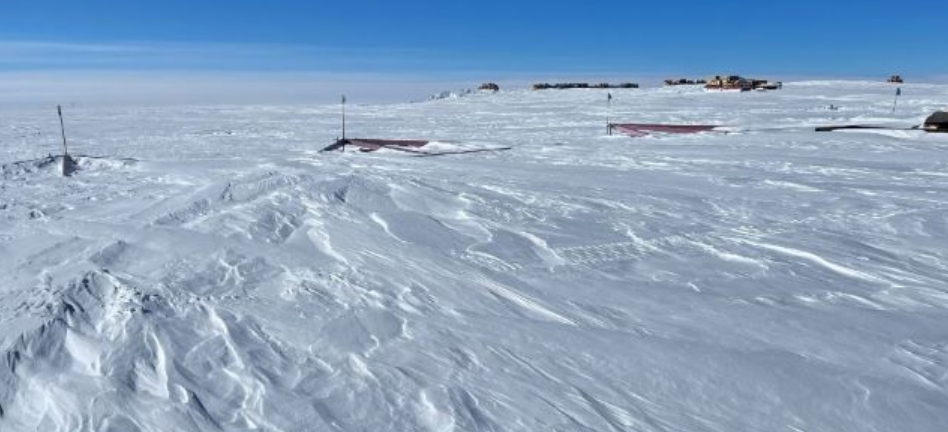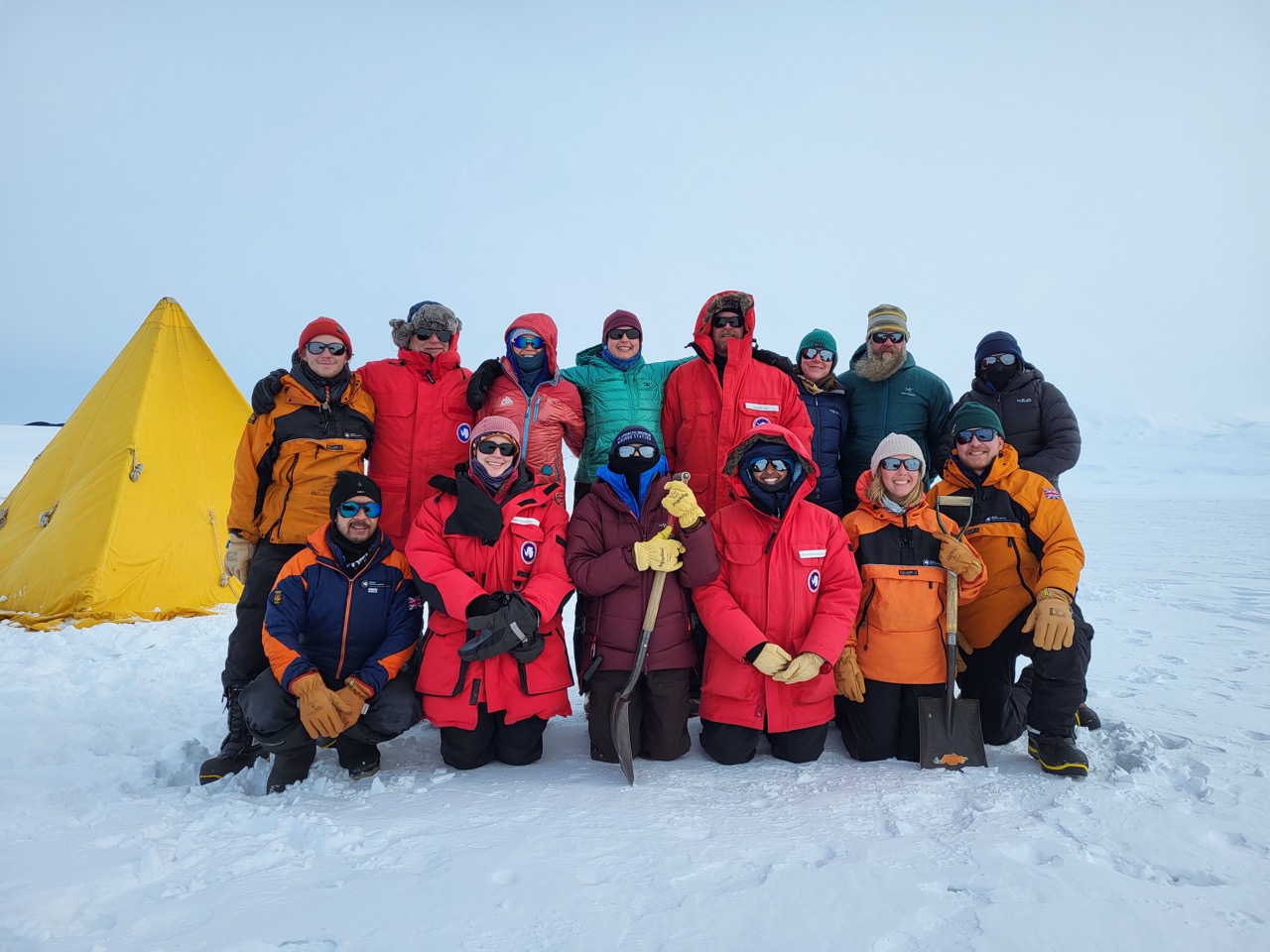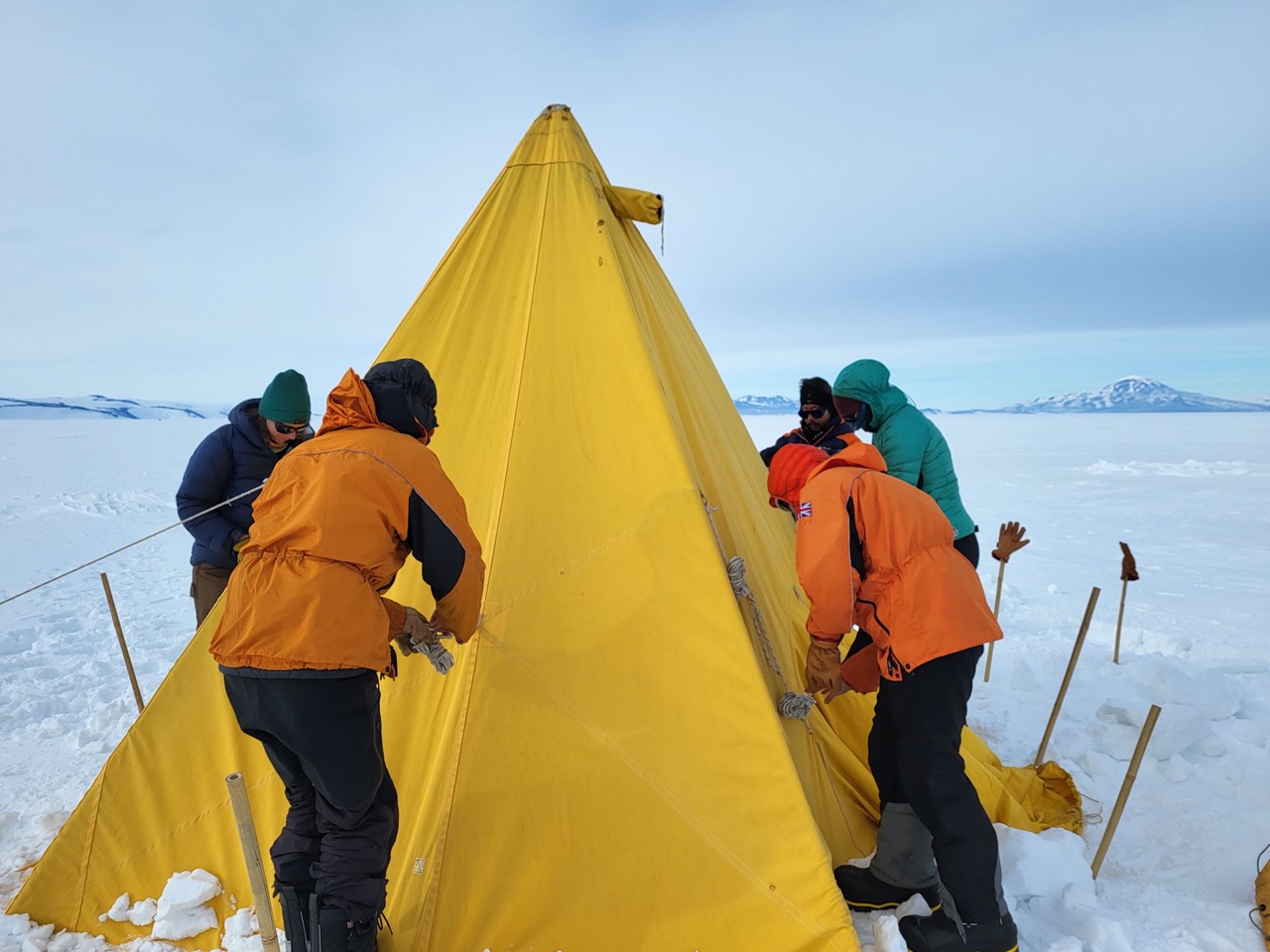Nearly 60 scientists and support staff are on their way to Thwaites Glacier in Antarctica as part of the ambitious international effort to understand the glacier and surrounding ocean system to determine its future contributions to global sea-level rise. This season represents the fourth of five planned field seasons for the research.
The International Thwaites Glacier Collaboration (ITGC) ambition started in 2018 and, after two successful field seasons, was then slowed by the effects of the pandemic. This led to a cancellation of major land-based field work in 2020-2021, although some instrument data were recovered, and a greatly reduced land-based field season last year. Despite these limitations, progress on understanding the glacier and surrounding system has continued apace.
Thwaites Glacier, covering 192,000 square kilometers (74,000 square miles)—an area the size of Florida or Great Britain—is particularly susceptible to climate and ocean changes. Over the past 30 years, the amount of ice flowing out of the region has nearly doubled. Computer models show that, over the next several decades, the glacier may lose ice even more rapidly. Already, ice draining from Thwaites into the Amundsen Sea accounts for about four percent of global sea-level rise. A collapse of the glacier would lead to a significant increase in sea levels of around 65cm (25 inches) over the coming centuries.
Thwaites Glacier is extremely remote; the study sites on the glacier are more than 1,600 kilometers (around 1000 miles) away from both the U.K.’s British Antarctic Survey (BAS) Rothera Research Station and the U.S. Antarctic Program’s (USAP) McMurdo Station. Getting scientists and support staff to the field sites involves transferring people and equipment through multiple camps as staging bases using caravans pulled by specialised tractors and several different types of aircraft fitted with skis for landing on the snow.

The ITGC research teams have started arriving in Antarctica and are ready to move to their remote camps on the glacier. Four of ITGC’s eight research projects will be deployed this season focusing on different aspects of the glacier and its environment. They are: Geological History Constraints on the Magnitude of Grounding-Line Retreat in the Thwaites Glacier System (GHC), Thwaites-Amundsen Regional Survey and Network Integrating Atmosphere-Ice-Ocean Processes (TARSAN), Thwaites Interdisciplinary Margin Evolution—The Role of Shear Margin Dynamics in the Future Evolution of Thwaites Drainage Basin (TIME), and Geophysical Habitat of Subglacial Thwaites (GHOST).
Most of the teams are moving through the U.S. McMurdo Station, with a smaller number travelling via the U.K. Rothera Research Station. From there, most will move to an existing camp called West Antarctic Ice Sheet Divide (WAIS Divide), the main field hub for access to the remote field sites across Thwaites Glacier. As of 3rd December, this site was able to be accessed by U.S. field support teams to start preparing the way for our research teams. The TIME, TARSAN, and GHOST teams will be staged at WAIS Divide before heading further afield. But first, the team of eight support staff on site will need to dig out and start equipment, groom the ski-way, move structures into place, get generators and fuel systems going, and complete other tasks to support 60 scientists passing through the camp and onward to the study sites. In parallel, BAS tractors are traversing toward the camp in preparation to support the science.
The TARSAN team first deployed multi-sensor stations called AMIGOS (Automated Met-Ice-Geophysics Observing System) onto the ice in 2019/20 to study the ocean circulation underneath the floating ice shelf and the weather patterns to investigate the environmental factors that influence the structural stability ice shelf. This season the eight-strong team will repeat radar survey lines to determine how much melting has occurred at the ice base since the previous measurements, recover AMIGOS components, make observations to collect precision surface topographic data and re-set monitoring equipment.
This is the first field season for the GHOST team, which had planned to begin research in 2020. GHOST will undertake mapping of the ice and bedrock structure in the central and upper reaches of Thwaites Glacier. Twenty-four scientists and support staff will begin at the downstream end of the glacier and work steadily back upstream acquiring a number of different data sets on route, including seismic, radar echo sounding, and other geophysical measurements. One part of the team will use the BAS tractor train infrastructure, Pisten Bully vehicles, and containerised accommodation. The project uses a combination of observation-based studies and modelling to examine the bed beneath Thwaites by investigating the sediment, hydrology, and bedrock, and to assess the impact of these on the glacier’s dynamics. The team will be working on the ice until the end of January.
This season the TIME team of 11 scientists and support staff will head to the Eastern side of the glacier, the shear margin site, to carry out 2D and 3D seismic reflection surveys and radar measurements. The seismic technique uses sound waves at the surface to image the structure of the ice, much like an ultrasound. The experiments involve operating from a stationary remote camp and traveling with a fleet of ten snowmobiles to install small seismometers in the snow and to tow sled-based radar instruments across the shear margin. Observations made will be fed into computer models to project future change and contribution to sea-level rise.

A GHC project team will be deployed to the Hudson Mountains, where they’ll collect rocks and use radar to gather data on past ice surface elevation changes. The team will drill rock cores from both above and below the edge of the present ice sheet to determine its past extent. This is GHC's third deployment to the Thwaites region. Two team members participated in ITGC's research cruise in 2018/19 to collect samples from raised beaches along islands offshore from Thwaites. In the 2019/20 season the GHC team drilled rock cores from below the edge of present ice at Mount Murphy, on the western side of Thwaites Glacier, and they scouted out locations to determine a suitable drilling site which will be used in this year's research.
Dr Paul Cutler, who manages the ITGC project at the National Science Foundation, says:
“We’ve had some serious setbacks from the pandemic, including this season, however, I’m delighted that we now have ITGC teams tee’d up for the deep field. It’s an ambitious field plan that has required constant adjustment, but we are underway again.”
Ted Scambos, senior research scientist at University of Colorado, who’s part of the ITGC Science Coordination Office, says:
“This is a critical field season for the projects looking at the interior of the glacier, the areas where the longer-term changes will play out. We’re also visiting the coastal area, probably for the last time before it breaks away.”
Dr Robert Larter, a senior marine geophysicist at British Antarctic Survey, who is also part of the ITGC Science Coordination Office, says:
“This work is important. Data collected from Thwaites Glacier will underpin future sea-level rise predictions, providing our governments with the right information for policy and business actions that will help protect coastal cities, ecosystems and vulnerable communities.”
ITGC is a five-year, $50 million joint U.S. and U.K. mission to learn more about Thwaites Glacier, its past, and what the future may hold. Significant contributions to the research are also coming from Sweden, Germany, and South Korea. The ultimate goal of the project is to predict how much Thwaites will contribute to global sea-level rise, and how soon a transition to more rapid ice retreat might occur. ITGC is funded by the U.S. National Science Foundation (NSF) and U.K. Natural Environment Research Council (NERC).







